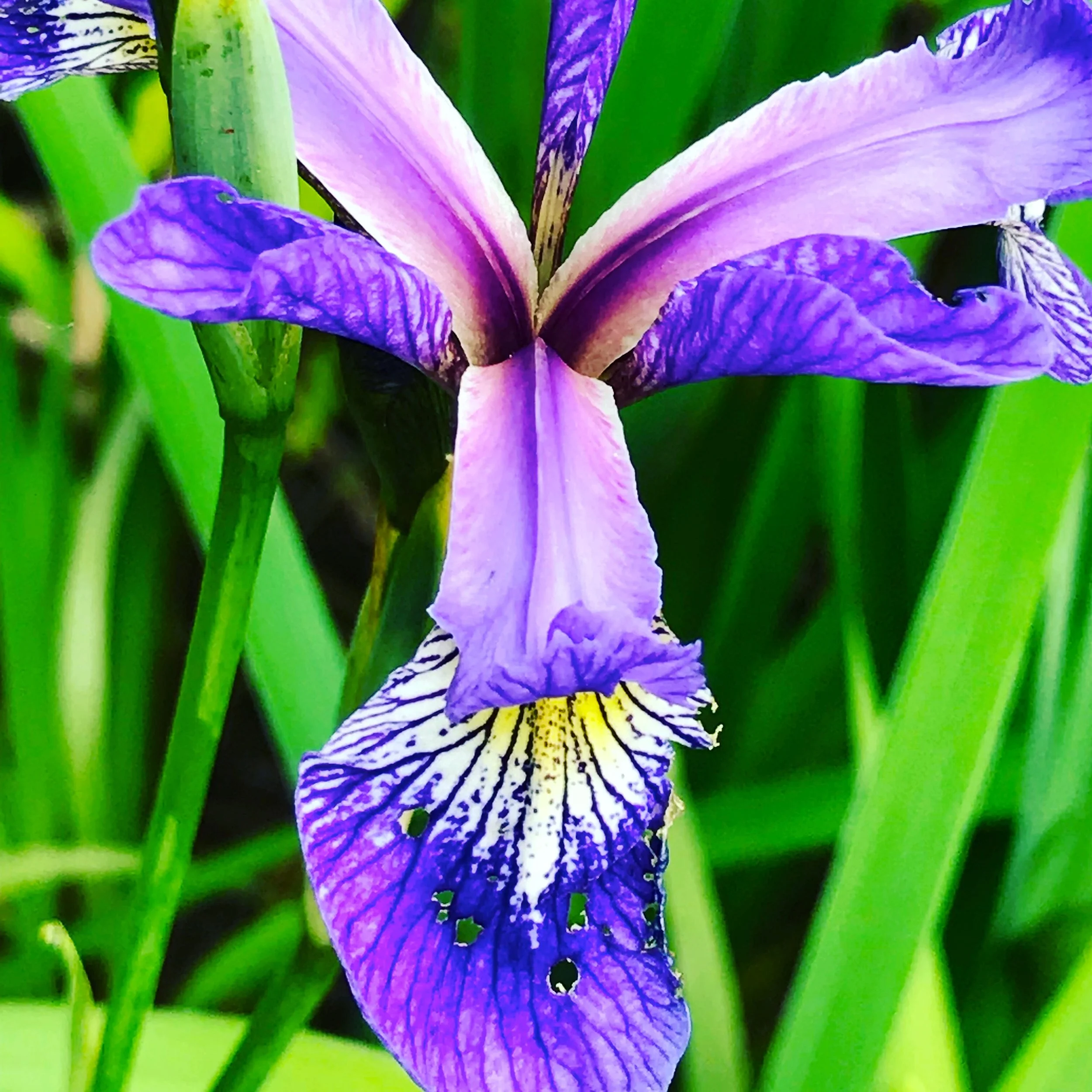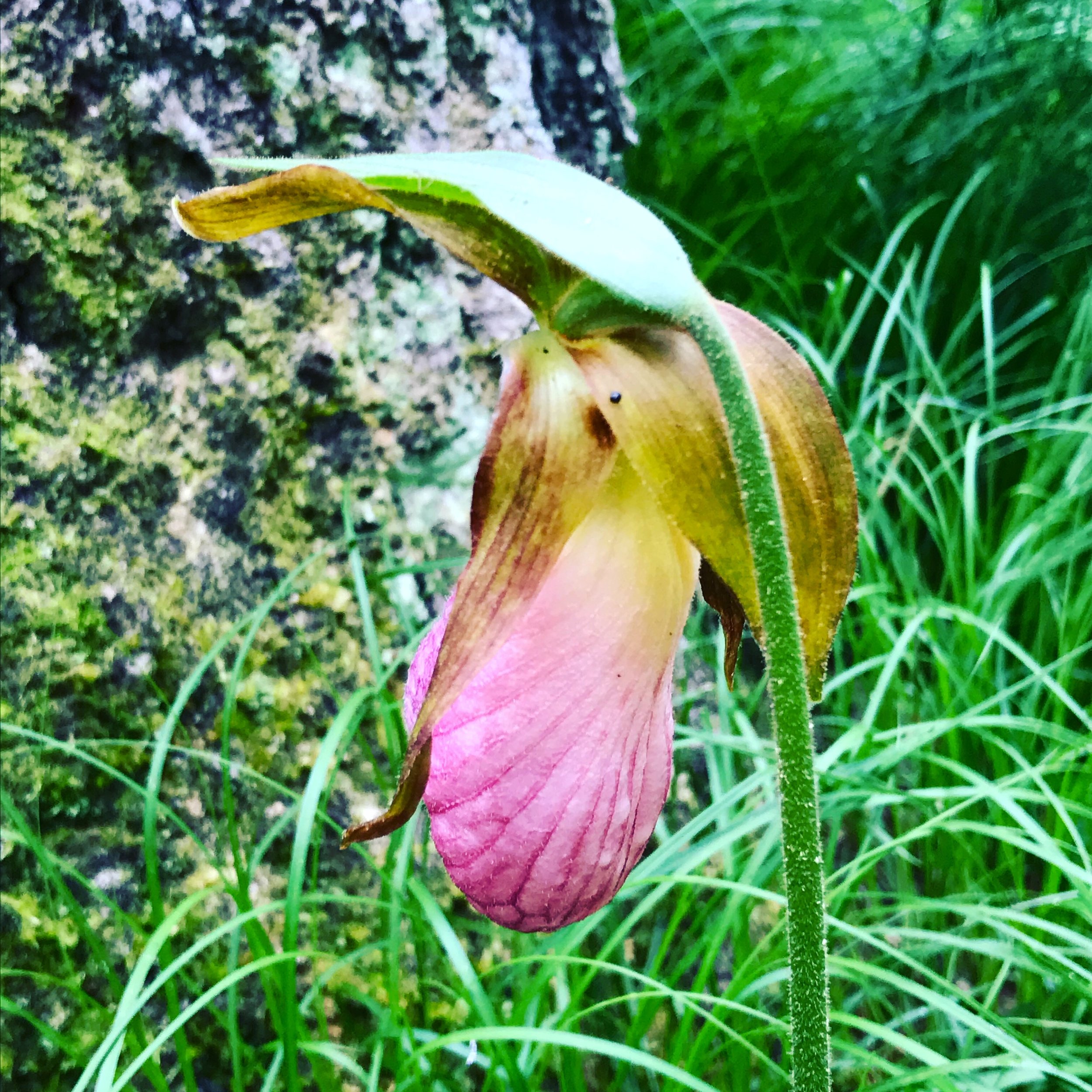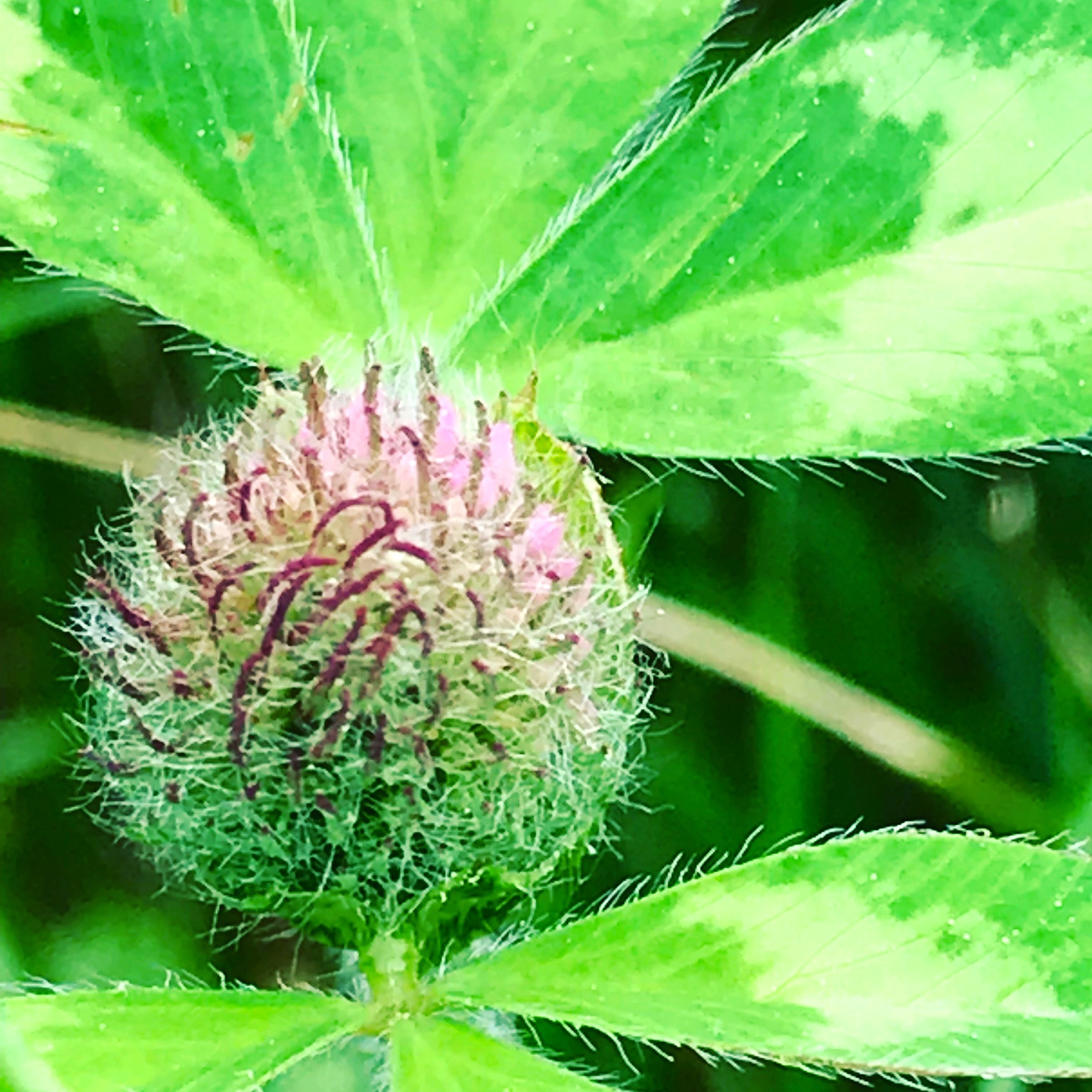#NewThisDay Writing From My Photo Stream
“Everything that slows us down and forces patience, everything that sets us back into the slow circles of nature, is a help. Gardening is an instrument of grace.”
Blue Flag Iris
Every June this Blue Flag Iris blooms at the edge of the swamp. Today, I walked with my friend who lives on the other side of the woods. We meet with our dogs in the meadow. We walked to see the lady slippers, and as we passed the wetland swamp that spills from the Charles, I saw this purple beauty in bloom.
The flowers are cross-pollinated by bumblebees and long-horned bees (Synhalonia spp.); butterflies and skippers also visit the flowers occasionally, but they are less effective at cross-pollination. These insects suck nectar from the flowers primarily, although some of the bees also collect pollen. Some insects feed on Blue Flag Iris and other Iris spp. destructively. They include such species as the weevil Mononychus vulpeculus (larvae feed inside seed capsules), the Agromyzid fly Cerodontha magnicornis (larvae mine leaves), the Syrphid fly Eumerus tuberculatus(larvae feed on rhizomes), the mealybug Rhizoecus falcifer (feeds on rhizomes), the aphid Dysaphis tulipae (feeds on foliage & rhizomes), and the thrips Frankliniella occidentalis (feeds on flowers). Caterpillars of such moths as Ctenucha virginica (Virginia Ctenucha), Spilosoma congrua (Agreeable Tiger Moth), and Macronoctua onusta (Iris Borer Moth), also feed on these plants. Mammalian herbivores rarely bother this plant because the foliage and rootstocks are somewhat toxic, causing irritation of the gastrointestinal tract.



